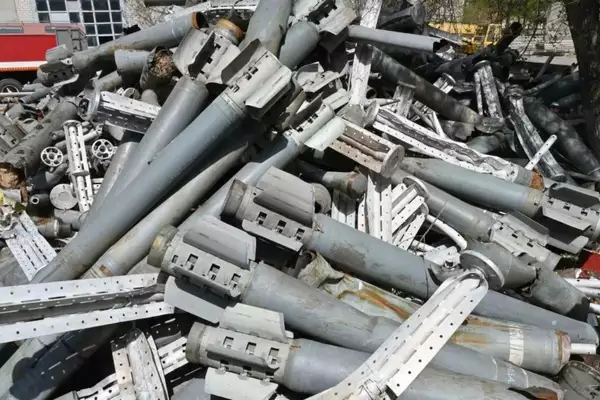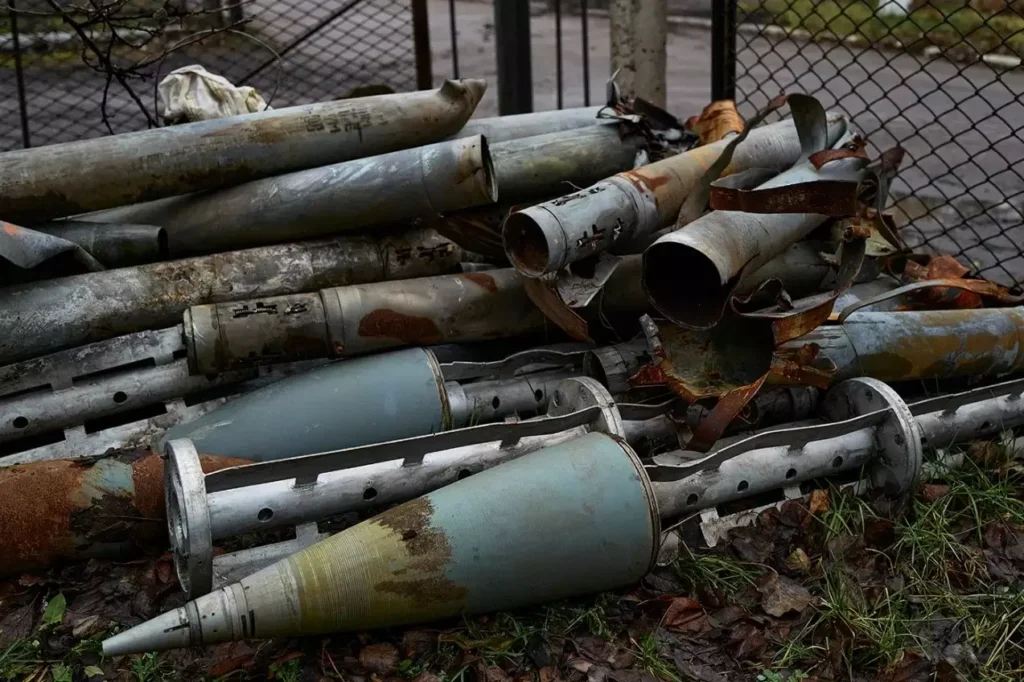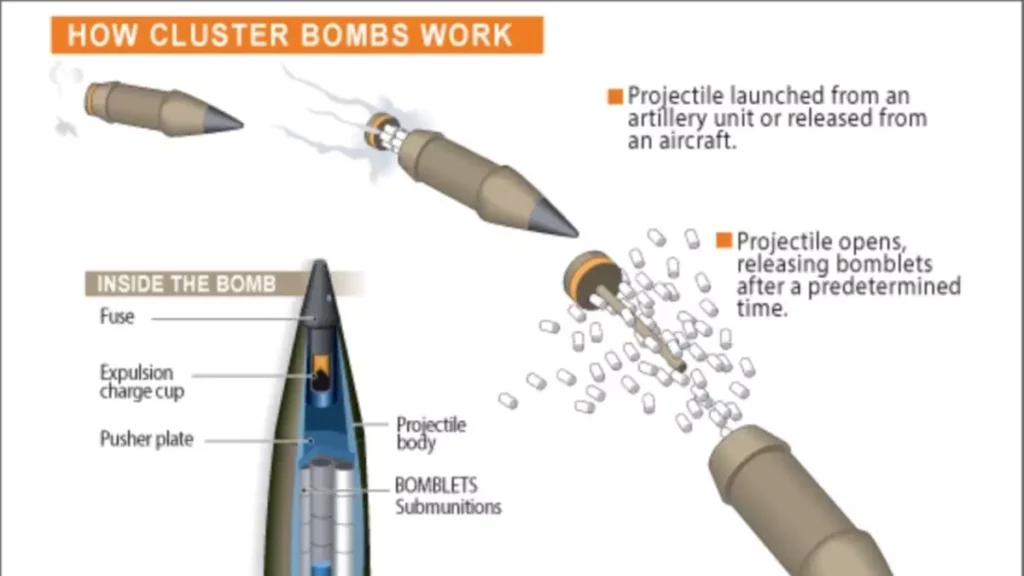Cluster Munition Monitor 2024, produced by the Cluster Munition Coalition recently stated that civilians accounted for 93% of the global casualties from cluster munitions in 2023.
About Cluster munitions:
- Cluster munitions are explosive weapons designed to release or disperse multiple smaller bomblets, known as submunitions, over a wide area.
- These weapons are primarily used in military operations to target dispersed enemy forces or infrastructure.
Key Characteristics:
- Structure: A cluster munition contains multiple submunitions that are released from a container mid-air, covering a wide area.
- Wide-area impact: These munitions can hit multiple targets simultaneously, but they are not precise, often striking unintended targets.
- Failure rate: A significant number of submunitions fail to explode upon impact, leaving behind unexploded ordnance (UXO) that can kill or injure civilians years later.
- Humanitarian concerns: Because of the long-lasting danger posed by unexploded bomblets, cluster munitions are often compared to landmines in terms of the long-term risks to civilians.
Cluster Bombs
- A cluster bomb is a type of cluster munition, specifically an air-dropped bomb that contains a large number of smaller bomblets.
- These are dispersed mid-air to cover a wide area, typically aimed at military targets.
- However, due to their wide area of effect and the high risk of unexploded ordnance, they often result in civilian casualties.
International Efforts:
- The Cluster Munition Coalition (CMC) is an international civil society group (2003) that works to ban the use, production, transfer, and stockpiling of cluster munitions.
- The CMC campaigns for universal adherence to the Convention on Cluster Munitions (CCM), which has been signed by 112 countries as of 2024.
- It was adopted in 2008 and prohibits all use, production, transfer, and stockpiling of cluster munitions.
- Major military powers like the United States, Russia, China, India have not joined the ban.
- The CMC produces the Cluster Munition Monitor, an annual report that tracks the use, clearance efforts, casualties, and global trends related to cluster munitions.
Key Findings of Cluster Munition Monitor, 2024:
- 93% of casualties from cluster munitions in 2023 were civilians.
- Nearly half of the victims of cluster munitions were children.
- 28 countries are contaminated or suspected to be contaminated by cluster munition remnants.
- Ukraine has the highest number of annual cluster munition casualties for the second consecutive year.
- 1.49 million cluster munitions and 179 million submunitions have been destroyed by States parties since the Convention was adopted.
- In 2023, Bosnia and Herzegovina became the ninth State party to complete clearance of cluster munition remnants.
Ref: Source
| UPSC IAS Preparation Resources | |
| Current Affairs Analysis | Topperspedia |
| GS Shots | Simply Explained |
| Daily Flash Cards | Daily Quiz |
Frequently Asked Question (FAQs):
What are cluster munitions?
Cluster munitions are explosive weapons designed to release multiple smaller bomblets, known as submunitions, over a wide area. They are intended to target dispersed enemy forces or infrastructure.
How do cluster munitions work?
Cluster munitions consist of a container that holds numerous submunitions. When deployed, the container opens mid-air, dispersing the submunitions over a large area.
Are there international regulations governing the use of cluster munitions?
Yes, the Convention on Cluster Munitions (CCM), prohibits the use, transfer, and stockpiling of cluster munitions. It also requires the clearance of unexploded ordnance and assistance to victims.




